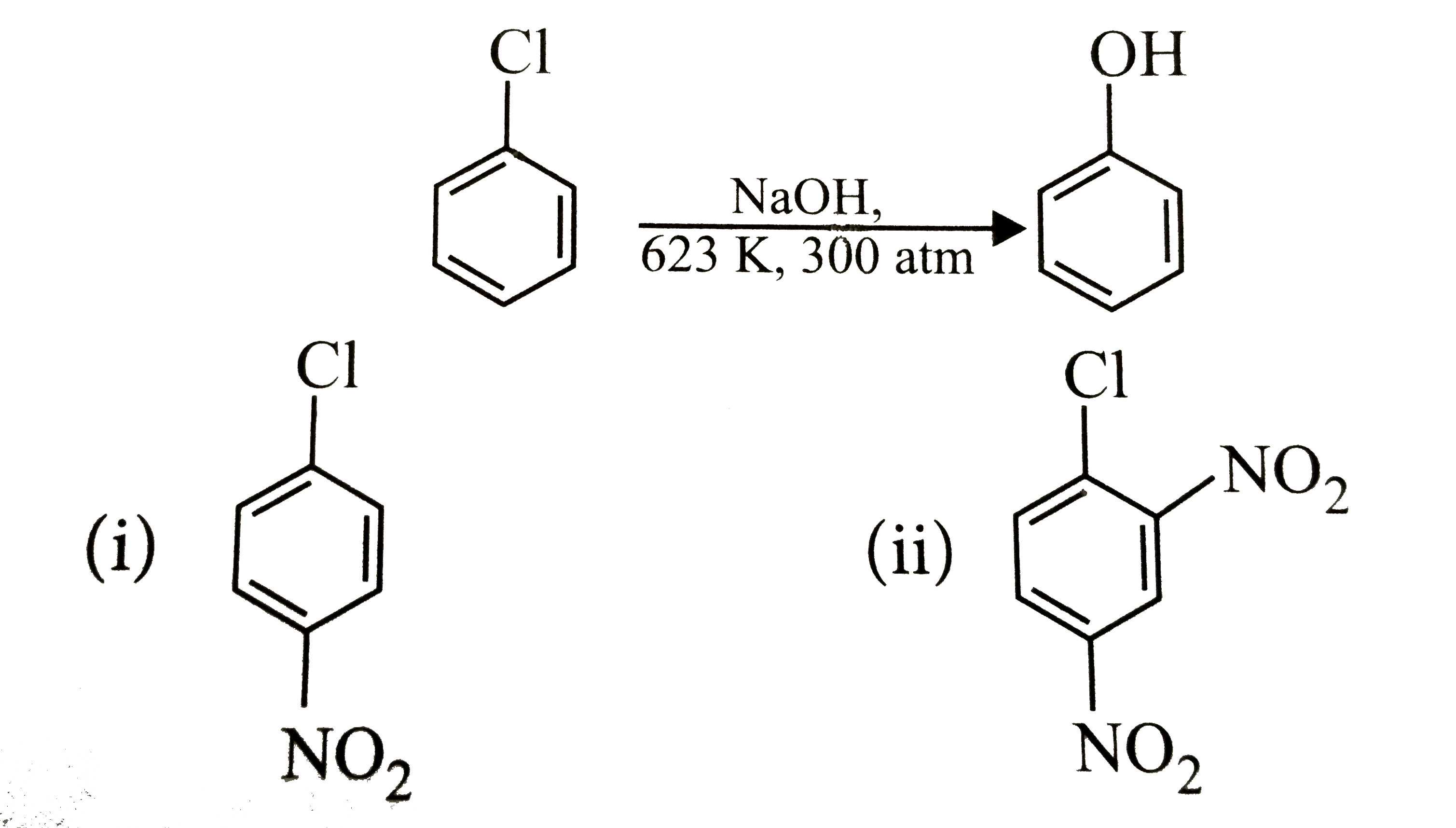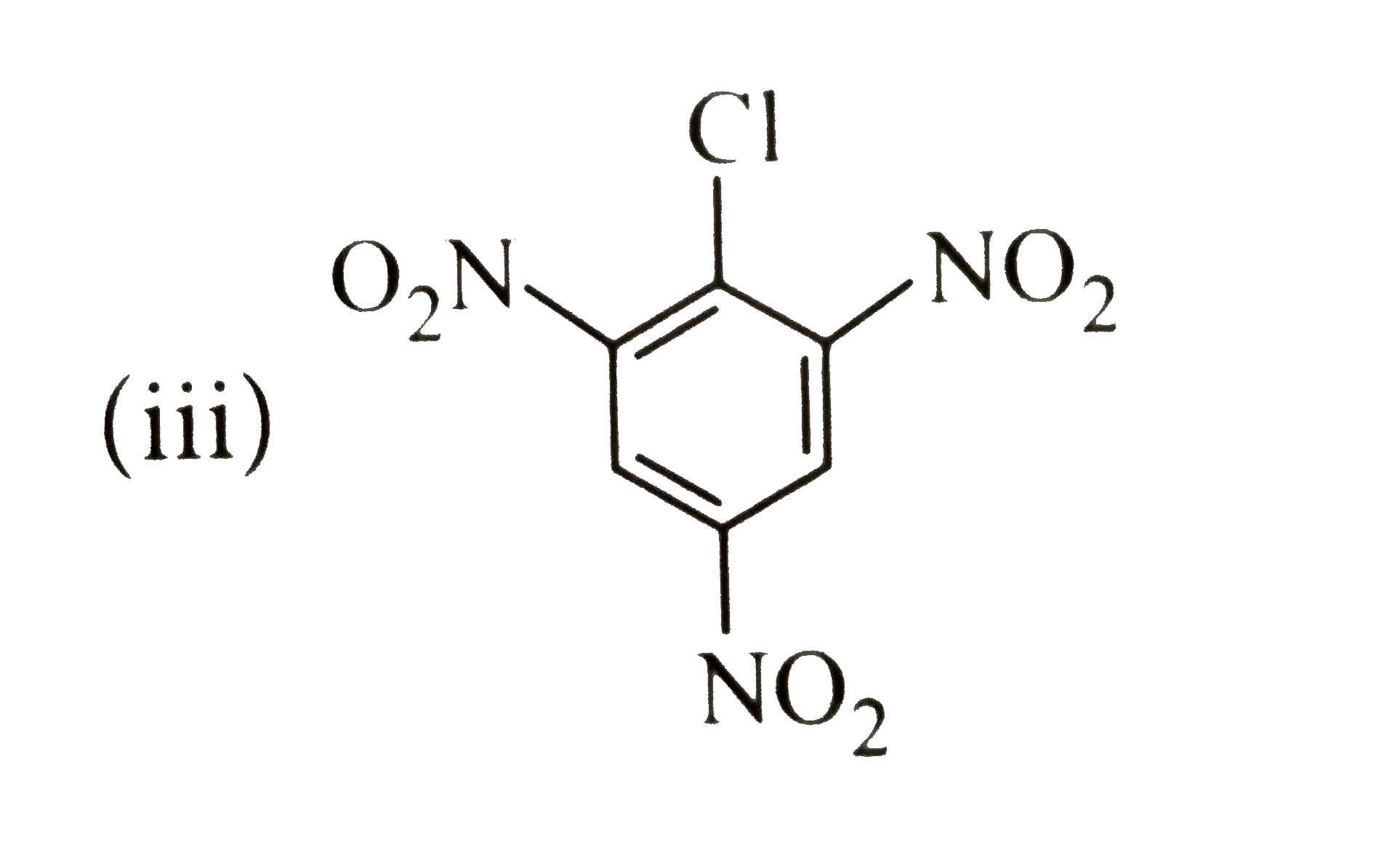The cyclic ether tetrahydrofuran (THF) can be synthesized by treating 4-chloro-1-butanol with aqueous sodium hydroxide (see below). Propose a mechanism for this reaction.

Removal of a proton from the hydroxyl group of 4-chloro 1-butanol gives an alkoxide ion that can then react with itself in an intramolecular SN2 reaction to form a ring.

Even though treatment of the alcohol with hydrox ide does not favor a large equilibrium concentration of the alkoxide, the alkoxide anions that are present react rapidly by the intramolecular SN2 reaction. As alkoxide anions are consumed by the substitution reaction, their equilibrium concentration is replenished by deprotonation of additional alcohol molecules, and the reaction is drawn to completion.
Topper's Solved these Questions
- BOOK - MS CHOUHANCHAPTER - ALCOHOLS AND ETHERSEXERCISE - ADDITIONAL OBJECTIVE QUESTIONS (SINGLE CORRECT CHOICE TYPE)26videos
ALCOHOLS AND ETHERS
- BOOK - MS CHOUHANCHAPTER - ALCOHOLS AND ETHERSEXERCISE - ADDITIONAL OBJECTIVE QUESTIONS (Linked Comprehension Type ) Paragraph for Question 1 to 41videos
ALCOHOLS AND ETHERS
- BOOK - MS CHOUHANCHAPTER - ALCOHOL, ETHERS AND EPOXIDESEXERCISE - Subjective Problems1videos
ALCOHOL, ETHERS AND EPOXIDES
- BOOK - MS CHOUHANCHAPTER - ALCOHOLS FROM CARBONYL COMPOUNDSEXERCISE - Additional Objective Questions (Multiple Correct Choice Type )1videos
ALCOHOLS FROM CARBONYL COMPOUNDS
Similar Questions
As ester has molecular formula C4H8O2. Write its structural formula. What happens when this ester is heated in the presence of aqueous sodium hydroxide solution? Write the chemical equation for the reaction and also state the chemical name of the products formed.
View SolutionAs ester has molecular formula C4H8O2. Write its structural formula. What happens when this ester is heated in the presence of aqueous sodium hydroxide solution? Write the chemical equation for the reaction and also state the chemical name of the products formed.
View Solution
Knowledge Check
- Question 1 - Select One
4-chloro-1-butanol + NaOH→ (B)
Product (B) of the above reaction is :A B
B C
C D
D
- Question 2 - Select One
The amount of metallic Zn (Atomic weight = 65.4) required to react with aqueous sodium hydroxide to produce 1 g of H2, is
A32.7 gB98.1 gC65.4 gD16.3 g - Question 3 - Select One
Alkenes can be oxidized in presence of different reagents to give different products. Alkenes on oxidation in presence of silver at high temperature give cyclic ethers, which also can be synthesized by using per acids. Alkenes on reductive ozonolysis give carbonyl compounds in presence of zinc and peroxide. On reaction with acidic KMnO4, it also produces corresponding carbonyl compound. Alkynes can also be oxidized in presence of such reagents but the products are different.
Cyclohexene is allowed to react with ozone and subsequently with H2O2 and water. The product formed isAoxalic acidBmalonic acidCsuccinic acidDadipic acid
Chlorobenzene can be converted into phenol by heating in aqueous sodium hydroxide solution at temperature of 623K and a pressure of 300atm. However the rate of reaction can be increased by presence of certain groups in benzene ring. What will be the order of reactivity of following compounds towards the above substitution reaction?

 View Solution
View SolutionChlorobenzene can be converted into phenol by heating in aqueous sodium hydroxide solution at temperature of 623K and a pressure of 300atm. However the rate of reaction can be increased by presence of certain groups in benzene ring. What will be the order of reactivity of following compounds towards the above substitution reaction?

 View Solution
View SolutionExplain why
(a) the dipole moment of chlorobenzene is lower than that of cyclohexyl chloride ?
(b) alkyl halides, though polar, are immiscible with water ?
(c) vinyl chloride is unreactive in nucleophilic substitution reactions ?
(d) neopentyl bromide undergoes nucleophilic substitution reactions very slowly ?
(e) 3-bromocyclohexane is more reactive than 4- bromocyclohexane in hydrolysis with aqueous NaOH ? (f) tert butyl chloride reacts with aqueous sodium hydroxide by SN1 mechanism while n-butyl chloride reacts by SN2 mechanism.
(g) Grignard reagents should be prepared under anhydrous conditions ?View SolutionWhat happens when ? Give equations only:
(i) chlorine reacts with CS2 in pressure of anhydrous aluminium chloride .
(ii) Chloride is heated with alcoholic KOH and aniline.
(iii) Ethyl alcohol is heated with ionic and sodium hydroxide.
(iv) Ethyl alcohol reacts with bleaching powder.
(v) Chloride is passed through ethyl alcohol.
(vi) Ethyl bromide reacts with sodium ethoxide.
(vii) Ethyl bromide reacts with silver cyanide.
(viii) Chloral is treated with aqueous sodium hydroxide.
(ix) Carbon tetrachloride is treated with hydrogen fluoride in pressure of antimony fluoride.
(x) Ethyl amine is heated with chloroform and alcoholic KOH.
(xi) Chloroform is boiled with aqueous potassium hydroxide.
(xii) Ethyl bromide is treated with alcoholic caustic soda.
(xiii) Ethyl bromine is heated with zinc.
(xiv) Methyl magnesium bromide is treated with formaldehyde followed by hydrolysis.
(xv) 2-Bromopentane is heated with alcoholic KOH.
(xvi) 2-Chloro-2- methylpropane is treated with potassium tert-butoxide in dimethyl sulphoxide.
(xvii) tertiary Butyl chloride reacts with ethylene in presence of AICI3
(xviii) Benzene reacts with n-propyl chloride in pressure of anhydrous AICI3View SolutionExplain :
a. Vinyl chloride is unreactive in nucliphillic 4− subsitution reactions.
b. Neopenthyl bromide undergoes nucliphillic substituion reactions very slowly.
c. 3− Bromocyclohexane is more reactive than 4− bromovyclohexane in hydrolysis with aqueous NaOH.
d. ter− Butyl chloride reacts with aqueous sodium hydroxide by SN1 mechanishm while n− butuyl chloride reacts by SN2 medchanism.View Solution

